
10 days into the unexplored Guainia
By Alejandro Pinto
The past Feb 12th I got a call, WWF (World Wildlife Fund), invite me to join a 10 days scouting trip on March 2021, traveling along the Guaviare river – in the area of Guania department – as part of a conservation program focus on Boto or Amazonian river Dolphin (Inia geoffrensis humboldtiana / Delfin Rosado del Orinoco) but also with the chance to watch and record some birds in this barely explore area of Colombia in terms of biodiversity, I said yes! I didn’t know the conditions at the field, but as part of my background as a biologist I have worked a lot in the Orinoco river basin, some of those works have took me to publish – with my colleagues – some papers of bird’s biodiversity, including two big areas next to Guainía, so let´s start talking about the area itself.
Known as Estrella Fluvial del Inirida (EFI) because of the join of big rivers: Inirida, Guaviare, Orinoco and Atabapo) is a wetlands complex which contains some of the highest hydrological, biological and cultural diversity, the landscape is a complex where ecosystems of Amazonian, Orinocan and Guyanan origin converge and intertwine in a complex network of waterways that have physicochemical and biotic characteristics reflecting very different origins of the Andes Mountains, the Guyana Shield and the Amazon floodplain (Trujillo et al. 2014).
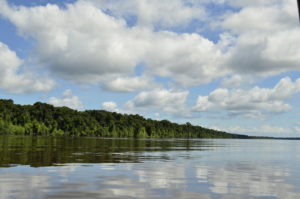
This diversity of freshwater ecosystems generates and maintains a mega-diverse richness of species. Thus, in the area of little more than 300.000 ha. of the EFI scientists have identified more than 1,172 species of plants, 10 decapod crustaceans, 470 species of fishes, 130 amphibians and reptiles, 253 birds, and 101 mammals (Trujillo et al. 2014) but also a huge cultural diversity with more than 17 communities of indigenous people, who are members mainly of the Curripaco and Puinave communities (Lasso et al. 2009).
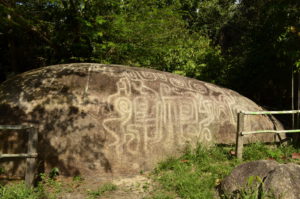
In 2016, Gary Stiles (my university professor) and Jurguen Becker (one the Birdwatching tourism in Colombia pioneers) present the first detailed inventory of the birds of Inírida with 436 species, including the first documented records for Colombia of Thripophaga cherriei (Orinoco Softtail) and Perissocephalus tricolor (Capuchin birds) and a first sight record of Ortalis motmot (Variable Chachalaca); Over 100 of the species recorded by them present significant extensions of their known distributions within Colombia, although nearly all of these had been recorded from adjacent Venezuela (Stiles and Beckers, 2016).
Lately in 2017 in a birdwatching trip, Pablo Florez a renowned Colombian birdwatcher, recorded a mistery bird, a Typical Antshrike song, when he and his group watched the bird looks like a Chestnut-backed Antshrike (Thamnophilus palliatus) a bird which is found in southeast South America – at least 600km southern from Inirida – this bird is now a common sight in some areas along the Guaviare river but remains as a mystery, could be a new specie (Inirida Antshrike) or a huge new extension on its range of distribution. On this trip I will try to found other spots for this bird.
The exploration will start in Puerto Inirida, the capital city of Guainia department, access by river or by plane, if you look at the map, the city remains as an island, is surrounded by white sand forest, Guiana rock shield, terra firme forest, but also by Varzea forest, which means everything around is under the water at least 7 months a year, since the varzea is a flooded forest. I will flight from Bogotá to Inirida (1h 30min), then a tuc tuc (Moto taxi) from the airport to the port on the river and from there we will go upstream and then downstream along the Guaviare river by a planchon – literally: slab – an old river ferry with few rooms (only for crew members) but with hammock spots available. The main idea is watch birds from the ferry but also, we´ll have a small boat to have access to the forest from time to time, especially at mornings and afternoons, we need to make a mandatory stops to spend the night and after 5-6 days we will arrive to Barranco Minas, a barely known town, founded in 2019! And from there 4-5 days to go downstream again until Puerto Inirida.
The area is especially important for Manakin Nature Tours Staff – a new project: TOP SECRET! Is coming and involve the area of Inirida – so this scouting area even more important for us. On the other hand, we as a tours company and the local Guainia department gubernators, pheasants and indigenous communities are trying to promote this area for ecotourism.
Do I will found new locations for this new Colombian bird’s records along the Guaviare river? Do I will have the chance to even photograph them? For now, I am getting ready, I am refreshing my mind with bird’s songs, data bases of records and studying my photos, I have been out of the field the last year due to covid, and this is a good way to re-start.
First task: a list of the possible birds for this area = 680 +, ready.
Second task: a library with the birds songs, ready.
Third task task: small backpack, only the necessary (field equipment, hammock and mosquito nest, repellent and few clothes) ready.
Finally my covid test 2 days before the trip = negative, ready to flight!
Day 1. March 2nd. 2021
Sailing
I haven’t seen in my life an small cargo ferry, “adapted” for with 41 persons (between: biologist, ecologist, environmental engineers and the ferry crew…) with all their clothes, hammocks, field equipment and cameras, believe me: is a mess! Backpacks are everywhere and as usual first day is chaotic, but here we are, sailing upstream on the Guaviare river, which in this area is the natural limit between two departments: Guainia and Vichada but also the limit between the Orinoco river basin ecosystems and the Amazonian forest. Also remains as unexplored area due to the civil conflict of the last 50 years, but now and for first time we had the pleasure to be in during few days. I had chance to jump out of the ferry on a small boat and visit the Varzea forest (seasonally flooded forest) and some water creeks. I watched birds with Camilo (Manakin Nature tours local guide) and we recorded the Orinoco Softtail, the new specie: Inirida Antshrike both recently recorded and discover for Inirida and for first time recorded upstream this river. We also saw other birds like: Amazonian Streaked Antwren, Varzea Schiffornis, Cocoa Thrush, Orange-cheeked Parrot. Because I during the last year I couldn’t visit this area I was asking to Camilo all the time about the songs and calls into the forest, my brain was completely rusty and overwhelmed!
We catch up the ferry again, make my notes at 6pm in the middle of a mosquitoes’ cloud and time to hang my hammock and be ready for next day!
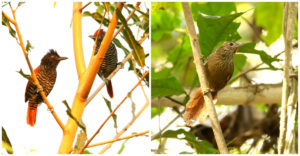
Inirida Antshrike (new specie, Thamnophilus nov sp.) and Orinoco Softtail.
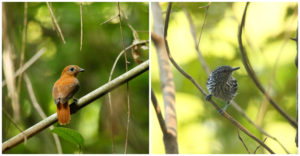
Varzea-Schiffornis-and-Amazonian-Streak-Antwren.
Day 2. March 3th. 2021
Chiggers!
Early call for birding, 5 am breakfast, we took a small and fast boat and we visit two paths in an area called Carrizal, where a community of Puinaves indigenous groups live. We had more time to walk into the forest, this morning Juan, a Puinave indigenous join us and lead us into the forest, again my brain was trying to remember the songs and calls into the forest and we saw some good birds like: Mouse-colored Antshrike, Cinereous Antshrike, Gray Antbird and Wire-tailed Manakin (briefly). Camilo told me about some records of Harpy Eagle in a farm house close by, so at the afternoon we moved to this house called Las Aguilas, but here the sad news… looks like somebody killed the Harpy some months ago, this big raptors usually kill chickens and have bad reputation, also people here don’t understand – yet – the importance of this majestic birds. Again 6pm notes, but tonight I decided to sleep in the sand beach, because we are still in summer time, the water level goes down and you can find big sand beaches along the river, every night we docked our ferry in a sandy beach. We dug some holes, put a couple wooden sticks, I hung up my hammock and ready to sleep!… at least that was what I was thinking, but my body was full of chiggers, welcome to the Amazon.
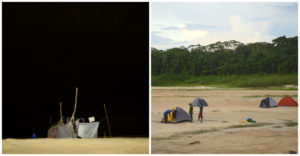
Our hammocks+mosquito net camp and tents on the sandy beaches
Day 3. March 4th. 2021
Lek.
An incredible beautiful sunrise after the night on the beach was the perfect way to forgot my chigger’s bites. this morning Camilo had to leave the group and go back to Inirida (4 hours downstream on a fast boat) so the next days I watched birds with two Juans. Juan 1: Puinave indigenous and Juan 2 or Juan Peque (Peque is his nickname) a 25 years old guy who born and grew up in this area, that means two new birders and one rusty brain birder for the next days!
We did one stop today in an area close to the uwa river, where indigenous Sikuani community live, before enter into the forest we asked for access to the community chiefs and after some minutes we waited for the permission, they debated in their language (in Colombia we have about 69 native language) I didn’t understand but we got the access and Iko one of the community members join us, he was carry bow and arrow. We walked about 4km in total into the varzea forest, Blue-throated Piping-Guan appears first and then occasionally some Antshrikes, Antbirds and Antwrens and deep inside the forest I saw a male Wire-tailed Manakin jumping like crazy, we got closer and I invite the locals to see during about 30min a lek with 3 adult males, one juvenile male and one female dancing and jumping between branches, this was a great experience for them! We get back to our boat, but this time we were using a 15 horsepower outboard motor, I took 3hours to get the ferry again, time for notes, eat and sleep!
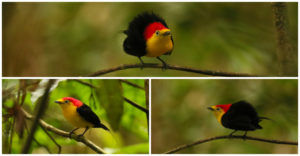
Wire-tailed-Manakin-lek
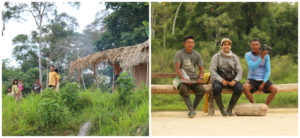
The community on the river bank and Juan, Alejo and Iko after morning birding
Day 4. March 5th. 2021
El Pajuil.
Birders into the boat at 6am! The same Group, 2 Juans, Alejo and today Camilo a professional photographer joins us, again we chose randomly a farm house next to the river, we ask if they have a path into the forest and if they feel ok with us watching birds for a while in there. This morning Jhon the owner of the farm house and his two daughters said yes and join us. Jhon had an INCREDIBLE eagle eyes to see into the forest, he was pointing all the time birds and I was in troubles following him and find the birds even with my binoculars, but he was extremely helpful. luckily his two daughters (no more than 10 years old) were interest in birdwatching and I tried to show them all the birds into the forest and in the book. In some point Jhon said: El Pajuil! Pajuil or Paujil is the local name for the Curassows, secretive and hard to see birds despite their size, I asked: el rabiblanco o el rabirojo (the white tail one or the red tail one) Black Curassow or Crestless Curassow, he said: el rabiblanco, Black Curassow! We follow the motion, every time the Curassow flew back into the forest but finally I got a short glimpse of after 10 or 15 minutes, Camilo the photographer had to walk fast in between branches and trees to capture the moment and the birders in action. We saw other birds like: Spectacled Owl, Black-fronted Nunbird, Great Antshrike, Blue-throated Piping-Guan and Chestnut-capped Puffbird. No many bird´s photos this morning, sorry!
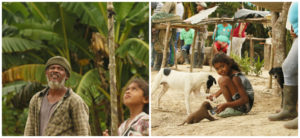
Jhon and his daughter after our birding session
Day 5. March 6th. 2021
Fishermans camp.
Early start, we jumped into our 15 horsepower engine boat and ride about 8km upstream, we watched a “path” on the river bank and decided to explore it. The path lead us to a Conuco (Conuco is the local name for a piece of land aprox 1 hectare that the people use for cultivate and harvest of local products: manioc or cassava, plantains, bananas and cocoa) because of that was an open area, I did not expected that. We were ready to hit the river again when we saw an entrance to the forest, 2 minutes later we found a fishermans camp – Because of the water low level and the Sandy beachs along the river, many local fishermans (Puinaves, Curripacos, Sicuanis…) built camp sites to spent one night or two and then keep going on the river while they fish – and behind the camp a path to walk into the pristine forest, bingo!
Two monkey species (Squirrel Monkeys and Wolly Monkeys) were foraging in the canopy and into the forest a birds mix flock were following them, I was in rush hour, watching through my binoculars, trying to get some photos and recording songs because is impossible to see everything in the low light conditions of the forest and with a bunch of birds! First bird I remember I saw was the Slate-colored Hawk and Black-fronted Nunbird, and then: Woodcreepers, Antshrikes, Wrens, Caciques, Thrushes and a lifer for me: Cinereous Mourner. By the end a Tamandua was also walking in the canopy! 10 minutes of pure adrenaline and the first record of Rufous and White Wren southern Orinoco river basin ecosystems. This is an openish areas or secondary growth shrub area bird, now according to my records inhabits the abandoned Cacao harvest areas, a signal of deforestation in the Colombia Amazon.
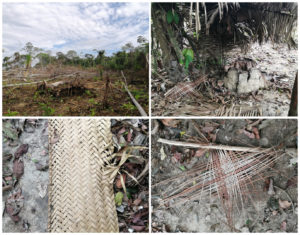
Conuco (clearing for harvest), rustic kitchen, handmade rug and handmade strainer
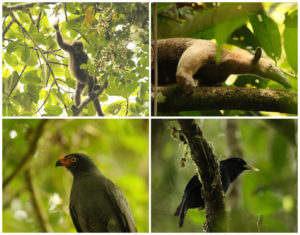
Wolly-Monkey-Tamanndua-Slate-colored-Hawk-and-Solitaire-Cacique
Day 6th. March 7th. 2021
Megalifer!
WWF communications team (cameraman and interviewer) wants to join to the birders for this morning, to understand our field work and enjoy a birding morning. Again we had to choose randomly an area next to the river, our first spot was an abandoned farm, we couldn’t found a path to go inside the forest, but we enjoy some birds we the whole team: Blue-throated Piping-Guan, Yellow-rumped Cacique building their nest, Crested Oropendola and others, but quickly we move to found a better site upstream for birding. Stopped at the first farm house on the river bank, they gave us access, we walked into the forest and the mosquitoes cloud wasn’t normal! The path leads to a smaller river and there are some flooded areas inside the forest, that explain the quantity of mosquitoes in there, despite that we watched some good birds: Screaming Piha, White-throated Toucan, Lettered Aracari, Scarlet Macaw, Black-fronted Nunbird, Wire-tailed Manakin. We were walking back to the our boat when I heard a new song for me far from our positions: Black-spotted Bare-Eye, despite is rarely seen away from ants It was there, I turned around and used a playback…3 or 4 minutes and nothing, the cameraman and Juan Peque were beside me, a bit incredulous I think, but then the bird sing again, it was getting closer. 10 minutes and thousands of mosquitoes later we enjoy the bird, photos and videos in the pocket, what a lifer! By then I spent some time with the farm house owner kids, I showed them some birds in the book, birds photos and birds videos!
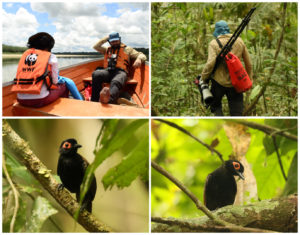
WWF-communications-team-and-the-Megalifer
Day 7 and 8. March 8th and 9. 2021
Downstream: rain rain rain.
We start to slowly go back to Inirida, 2 and a half days downstream the river with no stops, not much to say about this couple of day, looks like the rainy season is starting, we had: heavy rain, soft rain, drizzle, rain shower and all kinds or rain you can imagine…so I decided to record birds from the ferry, traveling at 15 km/h. (9 miles an hour), anyway from the boat we also added some good birds like: Drab-water Tyrant, Red-capped Cardinal, Horned Screamer, Muscovy Duck, Orinoco Goose, Collared Plover, Pied Lapwing, Green Ibis, King Vulture, Swallow-winged Puffbird and more, also every morning and late afternoon Scarlet Macaws and Chestnut-fronted Macaw flight going back to the forest.
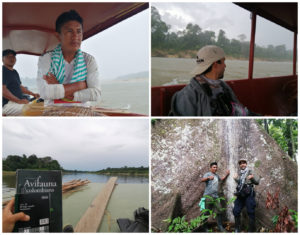
Watching-birds-with-Juan-during-the-rainy-days
Day 9. March10th. 2021
Carrizal
Last day of birding, today we reached the community of Carrizal, mostly inhabited by the Puinave indigenous community, our local guide Juan lives there and showed us some trails into the forest. We walked on “laguna jején” Trail, for about 3 or 4 hours, at the beginning was a cacao abandoned harvest field – so we ate a lot of cacao – this fields stopped to produce Cacao about 60 years ago, when the cocaine starts to be the main business of this area, long story short, no more cocaine over here, but corn, yucca, plantains, bananas and cacao are the products. After we passed by the cacao field we enter into the forest, first bird: Thrush-like- Antpitta, and then we saw: Black-fronted Nunbird, Gilded Barbet, White-browed Antbird, Silvered Antbird, Screaming Piha, Coraya Wren and at the end Boat-billed Heron, also some Collared Titi feeding in the canopy. Ready to hit the river again on the way to Inirida.
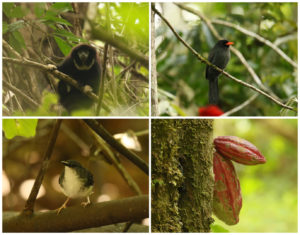
Collared-Titi-Black-fronted-Nunbird-Silvered-Antbird-and-Cacao-fruits
Dia 10. Mach 11. 2021
Mavicure

Words to describe Mavicure: Breathtaking, amazing, stunningly beautiful…These 3 monolithic hills are located about 50 km away from the city of Inirida heading upstream following the Inírida River. The hills are part of a Guyanese shield and they are called: Pajarito hill, Mono hill and Mavicure hill. It is one of the most sacred places for different Amazonian indigenous tribes such as the Curripacos and the Puinaves. It is incredible to watch these hills from the base and climb over them to contemplate the Amazonian jungle is something magnificent. This is an iconic touristic spot in Colombia and its filled with emotions during the first encounter with it; it is possible to not only observe the majesty of the Amazonian jungle from the Mavecure Hillls, but also to understand about the indigenous culture of the place, and the perfect place to end this expedition.
Thinking about a birding trip into the Amazon forest? Check out the Colombian Amazon trips with Manakin Nature tours following this link:
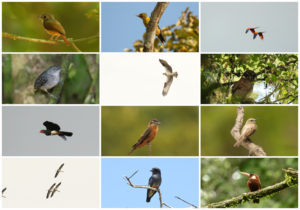
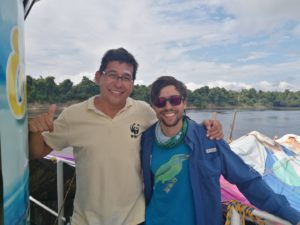
Saulo Usma (Freshwater ecosystems program chief, WWF) and Alejo (Tour leader and Chief operations Manakin Nature tours)
We (Manakin Nature tours and Alejandro Pinto Gómez) wants to thanks to: WWF Colombia and Fundacion Omacha for making us part of this expedition, also we want to thanks to our local friends: Camilo, Juan Peque, Juanito, Mauricio, Iko, Jhon and the ferry staff members (Comino and his family) for all their support during the field days and last but not least to the biologist, ecologist, naturalist, photographer, videographers and interviewers whos made part of the expedition in a disinterested way and with the only aim of generating knowledge of this beautiful area of Colombia: ProTerra and Fabio (Amphibians and reptils expert), University of Tolima and Ibagué: Jose, Jorge and Francisco(fish experts), CDA and Pedro (Butterflies expert), Angela(macroinvertebrates expert), University of Quindio and Diana (bats expert), the Dolphins crew from fundacion Omacha: Fernando, Erika, Marcela, Tatiana, Jimena, Jose, Angelica, WWF: Saulo, Marcela, “el Gordo”, Camilo, Luis and Maisa
.
 |
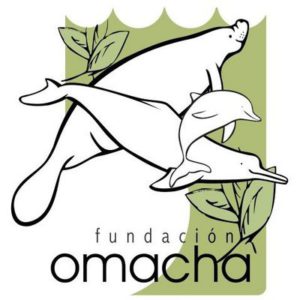 |
Sorry, the comment form is closed at this time.

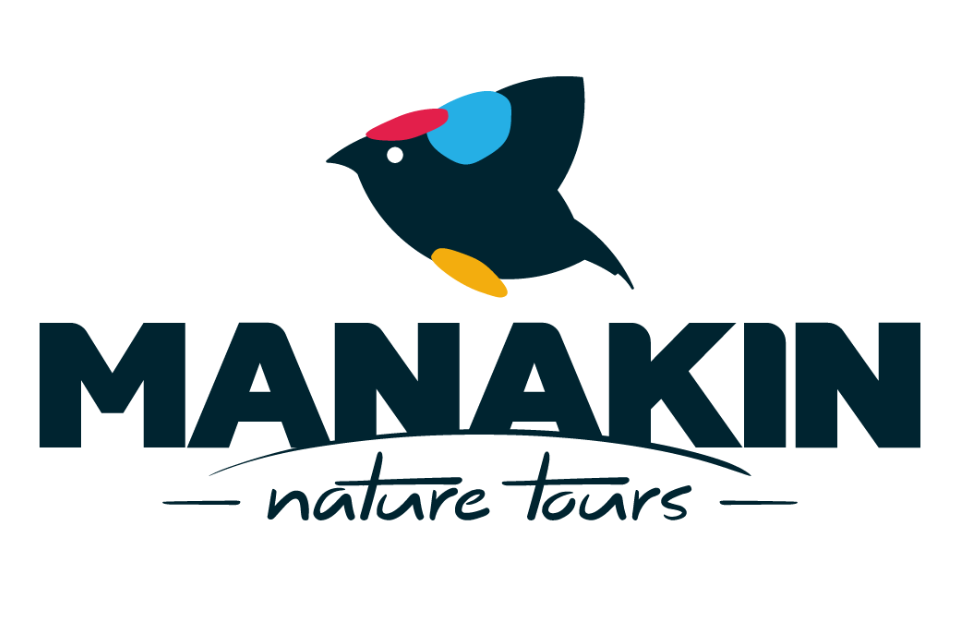

Paul Lombardi
Fantastic story. I felt like I was right there with you. The birding seemed unbelievable. What a treasure you have down there. Hopefully, it can be maintained and will become one of those “ must experience “ places for avid birders and others interested in such pristine locations.
If it is opened up for some limited ecotourism, hopefully the local indigenous peoples can gain something as well.
Larry Roshe
I enjoyed your tales of mosquitoes and birds in the Inirida area. It was certainly a memorable time when we visited there in 2018 or was it 2017? Does it matter? You are so thoughtful to share your survey work and include the Mavicure site. I never felt so overwhelmed in my life as I did standing in that sacred area.
Thanks again for your email.
Always,
Lorenzo Viejo
Michael Duffy
Great and inspiring trip report with fantastic images. Thanks for sharing Alejo!